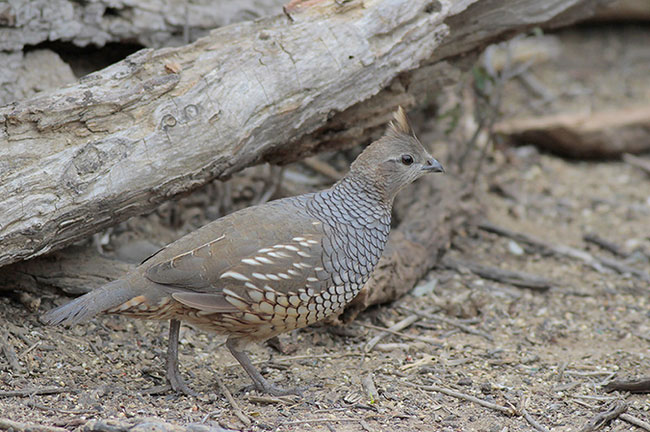
Quails are a group of land fowl or Gallinaceous birds defined by their stocky bodies, pointed wings, and a preference for a mainly terrestrial lifestyle.
Like with many other fowl, we call the female quails hens.
Quails display sexual dimorphism, but the difference is not as dramatic as in pheasants, peacocks, and other fowl. Accordingly, we must look at subtle features to determine whether the Quail is a female or a male.
In general, female quails are calmer and quieter. Their colors are commonly duller than in males, but still with more contrast on the breast due to the dark speckling. Also, they’re slightly heavier than the males.
Things get even more complicated with domestic quails with various color mutations – especially the pure white birds – that are impossible to sex by plumage. Luckily, there are several techniques you can use to tell a quail hen from a rooster.
Let’s take a closer look at how female quails differ from males.
Female vs. Male Quails
Note: Since there are around 130 quail species, we’ll primarily focus on the widespread ones.
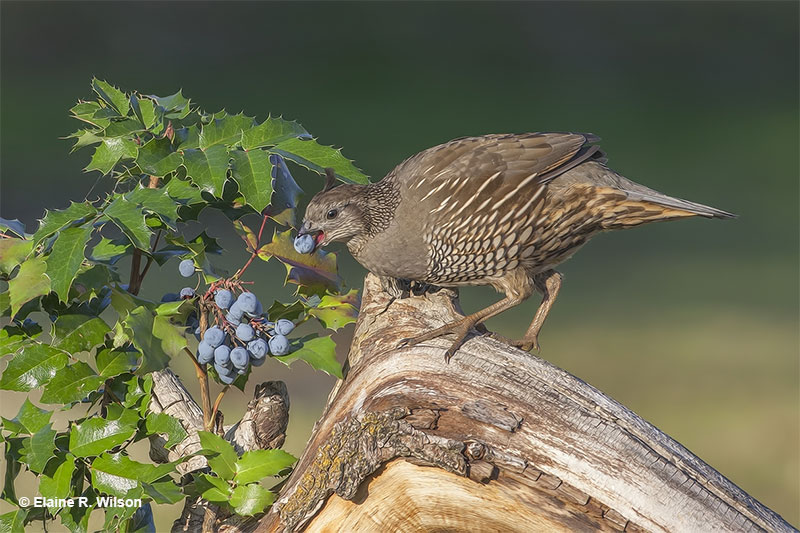
Female quails often have more laid-back complexion.
While Conturix Quail hens and roosters are more challenging to tell apart than some other Galliformes birds, we can still do it if we pay attention to several important details.
There are two main ways to separate male from female quails.
- Feather-sexing is telling hens from roosters by plumage color.
- Vent-sexing means telling the sexes apart by inspecting the birds’ cloacal opening (vent).
Also, there are noticeable behavioral differences between hens and roosters.
Scientific information
Here is a short list of sex differences in Conturix Quail.
| Traits | Female quail | Male quail |
| Color (Wild-type) | Duller (cream or light-brown) chest with speckles | More intense, darker, and reddish chests with no speckles |
| Cloacal Bulge | No | Yes |
| Coacal Foaming | No | Yes |
| Size and weight | Slightly heavier | Slightly lighter |
| Crowing | No | Yes |
| Aggressiveness | No | Yes (towards other males) |
Plumage
While they show similar color patterns, Quail hens and roosters differ in color intensity and certain shades. That is most obvious if we look at the birds’ breasts.
Wild-type Quail females have lighter-colored breasts, typically cream or light brown, with dark-brown speckles. On the other hand, the males have darker-colored breasts in reddish shades of brown and with no dark speckles.
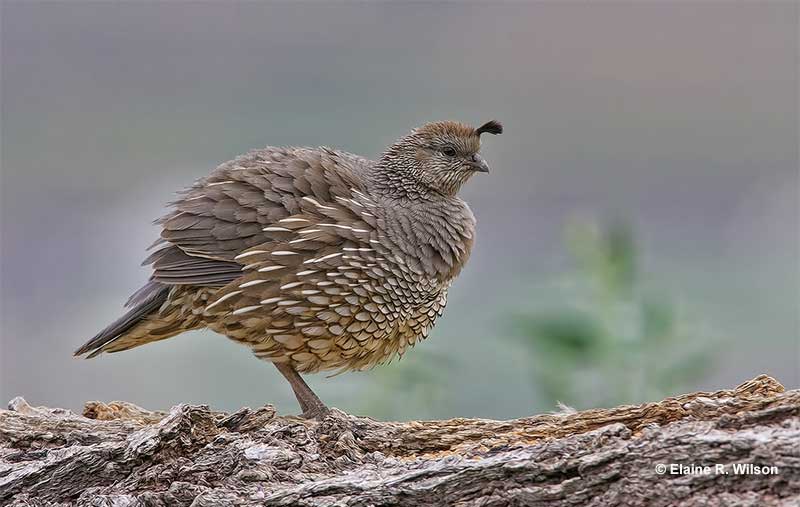
Here are the sexual dimorphism examples in some other well-known wild quail species:
- In the Northern Bobwhite, females have duller overall colors. Males have a namesake white throat with a distinct brow stripe edged by black. The females have a buff throat and lack the black border on the brow.
- In the California Quail, the state bird of California, the males’ throats are black; in females, the throats are greyer with black streaks.
- In the Gambel’s Quail, the roosters have a dark, thick plume, a black face, and a black patch on their breasts; the hens have thinner and duller plumes and no black markings.
Things get more complicated with domesticated quails that often hybridize and have mixed colors and color mutations. In these situations, you’ll often be unable to tell the females by plumage. Instead, you have to look at the birds’ undersides.
Cloaca
Examination of the bird’s cloaca or vent-sexing typically applies only to captive and domestic Quail, but still, it is the most reliable way to sex Quails.
Here’s how to do vent-sexing properly.
- Gently handle the bird so you can look at its underside and blow at the feathers underneath the tail. This will usually reveal the cloaca.
- If you already see a small bump, the bird is definitely a rooster. Quail hens lack the cloacal bulge.
- The bulge is sometimes not immediately visible, even in males. If you do not see it right away, put one finger above the cloacal opening and another one below it and gently press down.
- If a bump happens to pop out or there is a white foamy substance coming out of the vent, the bird is a male.
- The bird is a female if there is no bulge and no secretions coming out of the vent.
Size
There is no immediately apparent difference in size between the quail sexes. However, Quail hens are slightly heavier than roosters in most species. For example, in Japanese Quail, an average female weighs from 112 to 156 grams, while the male weighs between 100 and 140 grams.
Behavior
Male Quails are more vocal, territorial, and aggressive toward other males, while females have a calm disposition. If you observe two quails fighting, they’re most definitely males.
During the breeding season, the females are more passive and quiet, while the males will vocalize, crow, and “growl” while standing out to attract females.
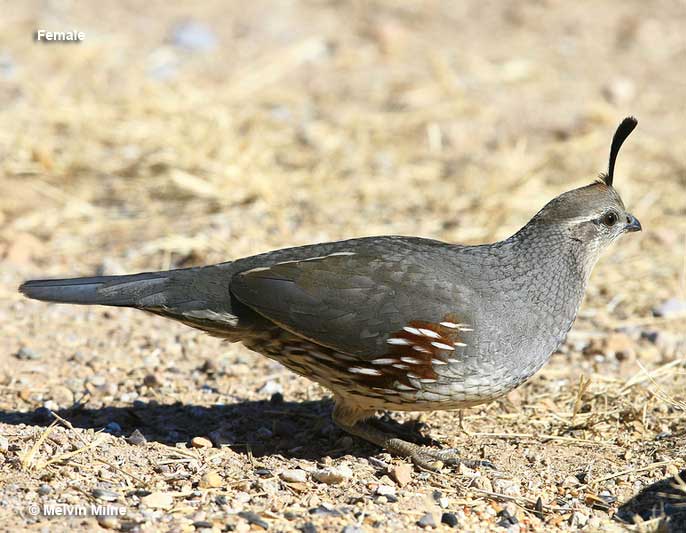
At the height of the mating season, the breeding females will lose some feathers on their heads, necks, and backs due to the very act of mating. If you’re observing Quails during the breeding season, the lack of feathers can be another tell-tale sign you’re looking at a hen.
How to tell a younger quail’s gender?
You can tell the difference in baby quails even at one day old by using vent-sexing. A careful inspection of the hatchling’s cloaca will reveal a bulb and a particular heart-shaped structure in males. In contrast, the females have a flat cloaca with no bulge.
You can use feather-sexing in brown-colored Quails after three to four weeks.
Young males at around 3 weeks can still sometimes be confused with females because some of them will still have dark speckling on their chest. Still, even at this age, their breast will be reddish.
At around four weeks, they’ll start losing the speckles for good and have typical male coloration.
Lifecycle
The Quail’s life begins in a ground nest scraped and lined with dry vegetation by the parent birds. Depending on the species and the individual, the Quail hen can lay between 7 and 28 eggs and have 1 to 3 broods per season.
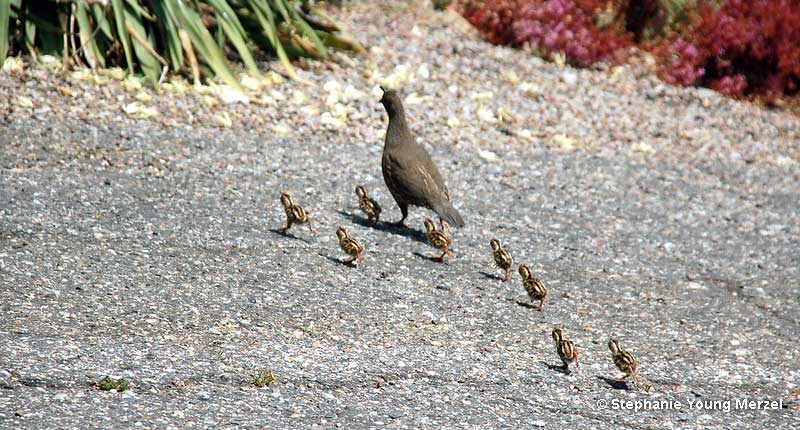
Quail eggs are tiny – around 1 inch or slightly more in size. The chicks are precocial, meaning they hatch fully capable of moving around independently; after staying in the nest for a day, they will venture outside. However, they still need the care of their parents, especially since their thermoregulation is insufficient, and they need additional heat from their mother’s body.
Quails reach sexual maturity when only 6 to 8 weeks old. The young females will start laying eggs at this time. They have a poor survival rate; less than 20% of Bobwhites, for example, live past their first birthday, mostly due to predation.
The average lifespan of both wild and captive quails is 1.5 years, while four and 5-year-old quails are a rarity.
Frequently Asked Questions
What’s the difference between male and female Quail?
Although not different at first glimpse, male and female quails differ in many traits. The hens lack a cloacal bulge and white excretions you can find in roosters by using the vent-sexing method.
The females usually have slightly duller colors on their breasts, throat, and back; still, in Conturnix quail hens, the pattern may appear stronger because of the dark speckling on the breast typical for females.
Hens are also calmer; during the breeding season, they’re quite passive, while the roosters get loud. At the same time, the females will sometimes experiencefeather losson their heads, neck, and back because of mating. Lastly, hens are usually at least slightly heavier than the males.
Do female quails have plumes?
Female quails of certain species have plumes on their heads, just like the males. However, hen plumes are often thinner and duller than in roosters.
Do female quails crow?
Female quails do not crow. Quail hens are the quieter of the two sexes. They do vocalize to call their chicks, sound the alarm, and respond to a calling mate. However, they never crow or make “growling sounds” like males during the mating season.
Do female quails sit on their eggs?
Quail females incubate their eggs, unlike the males. The hen will sit on the eggs for around three weeks (21 to 24 days) and will continue to warm the chicks when they hatch.
